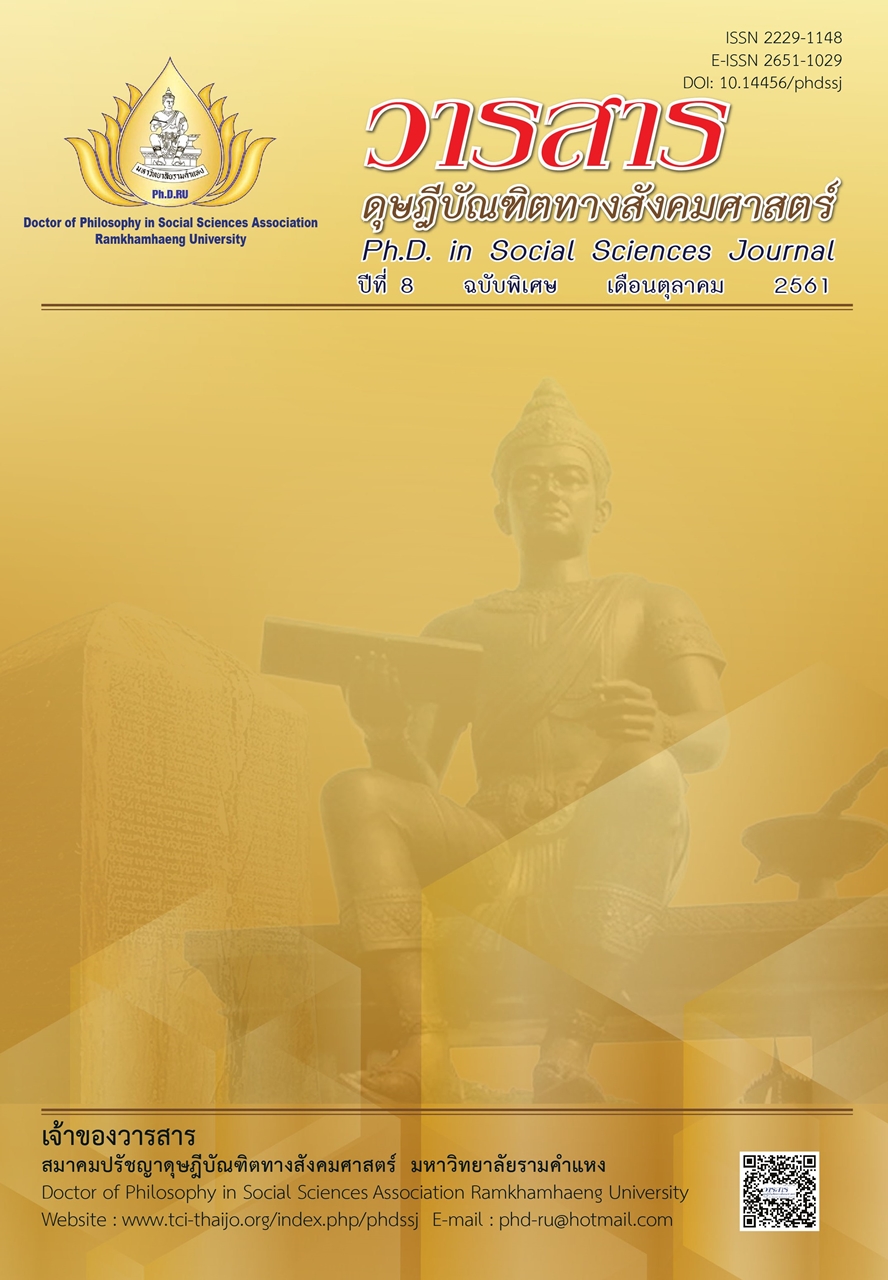Financial Hedging of Firms in the Industrial Estate of Thailand
Main Article Content
Abstract
The major aims of this study are to study individual factors, firm factors, the understanding of financial tools for financial hedging, creditworthiness of counter parties and the usage of financial tools for financial hedging. Additionally, the research studies the relationship between the understanding in financial hedging tools and the usage of financial hedging. The study also investigated the impact of counter parties’ creditworthiness on the use of financial hedging instruments of the industrial estates of Thailand.
This research conducts in term of quantitative approach. Populations are the companies in the Industrial Estate of Thailand, which have international transactions. Data collection employed 400 questionnaires for the sample group in 2016 by using convenience sampling. Collected data were analyzed in term of descriptive statistics, Pearson’ correlation and multiple regression models.
The major findings found that most of the respondents were female accountants, aged from 31 to 40 years old with master degree in accounting. Most firms are in the industrial sector and have operated not less than 10 years with an average annual income of approximately 101- 500 million baht. The firms are unlisted on the Stock Exchange of Thailand. Most of them import goods in US dollars. Most of the interest rate of foreign loans are floating rates. Forward contracts were employed in the percentage of 96. Most of the respondents had low – moderate level of the knowledge about financial instruments for financial hedging, and there was no statistical relationship. The concept of using financial instruments to hedge the financial risks. In regard to the creditworthiness of the counter parties, the financial position of the partners is the most important. The use of financial hedging instruments concerned fee rates as the first priority. In regard to creditworthiness of business parties, the financial position and the relationship with the counterparty were positively related with the use of financial hedging at the 0.01 significance level.
Article Details
Academic articles, research articles, and book reviews in the Ph.D. in Social Sciences Journal are author’s opinions, and not the publisher’s, and is not the responsibility of the Ph.D. in Social Sciences Journal Philosophy Association, Ramkhamhaeng University. (In the case that research is done on human, the researcher has to be trained in Ethics for Doing Research on Human Training and has to produce the evidence of the training).
References
Bank of Thailand. (2016). Foreign exchange rate. Retrieved May 31, 2017, from https://www.bot.or.th/Thai/Statistics/Indicators/Pages/default.aspx [In Thai]
Bank of Thailand. (2017). World economics indicators. Retrieved January 31, 2018, from https://www.bot.or.th/Thai/Statistics/Indicators/Pages/default.aspx [In Thai]
Bartram, M. S., Brown, G., W., & Fehle, F. R. (2009). International evidence on financial derivative uasge. Financial Management, Spring, 185-206.
Bulatovic, J. (2011). Application of method of financial risk in Serbian companies: Survey sample company. International Journal of Economics and Financial Issues, 1(2), 54-73.
Hungkit, S., Petcharat, N., & Phopan, N. (2016). The use of heading derivative financial instrument for managing foreign exchange rates risk. Journal of Management and Marketing, Rajamangala University of Technology Thanyabiri, 3(2), 131-145. [In Thai]
Industrial Estates in Thailand. (2016). List of companies in industrial estates in Thailand. Retrieved May 31, 2017, from https://www.ieat.go.th/en/investment/about-industrial-estates/industrial-estates-inthailand [In Thai]
Kim S, K., Mathur I., & Nam J. (2006). Is operational hedging a substitute for or a complement to financial hedging? Journal of Corporate Finance, 12(1), 834-853.
Krejcie, R. V., & Morgan, D. W. (1970). Determining sample size for research activities. Educational and Psychological Measurement, 30(3), 607-610.
Marshall, A. P. (2000). Foreign exchange risk management in U.K., U.S.A. and Asia Pacific multinational companies, Journal of Multinational Financial management, 10(2), 185-211.
Nilapornkul, N., Yuttasri, J., & Suaysom, T. (2016). Risk and return: Thai listed finance and security companies evidence. International Journal of Applied Computer Technology and Information Systems, 6(1), 95-100. [In Thai]
Siriwat, S. (2014). Use of financial instrument for hedging of the executives in Bangkadee Industrial Park. Proceedings of the 4th National Benjamitra Network Conference. Rajapruk University. [In Thai]
Sirakit, H., Petcharat, N., & Paopan, N. (2016) The use of heading derivative financial instruments for managing foreign change rates risk. Journal of Management and Marketing Rajamangala University of Technology Thanyaburi, 3(2), 131-145.
Thailand Future Exchange. (2016). TFEX product. Retrieved May 31, 2017, from https://www.tfex.co.th/th/about/glance.html [In Thai]


